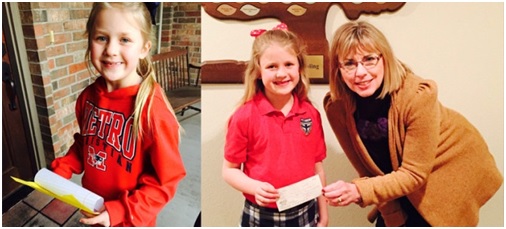Persuasiveness of a Child
Life would be pretty boring if we were all the same, if we thought the same thoughts, and if we were all of the same opinion. Thankfully, that is not the case. In fact, each of us is a one of a kind. Your DNA is unique; your fingerprints distinct. You are an original. It is differing attitudes and opinions that make life interesting, even colorful. However, some differences are more than just a matter of opinion. Some differences are a matter of right and wrong, of being safe or sorry, and of good and evil. This is when the ability to be persuasive becomes more than just a skill but a quality of good character.
Character First Persuasiveness is “guiding vital truths around another’s mental roadblocks.” (Character First Bulletin) To persuade another is to help one see the truth.
History is full of examples of great persuaders.
Faced with imminent danger from Nazis Germany, Winston Churchill rallied his countrymen when he said, “Never, never, never give up.”
On the steps of the Lincoln Memorial, Martin Luther King, Jr inspired men and women of all color when he said, “I have a dream that my four little children will one day live in a nation where they will not be judged by the color of their skin but by the content of their character.”
At the Brandenburg Gate in 1987, Ronald Reagan challenged Mikhail Gorbachev when he said, “Mr. Gorbachev, tear down this wall!” In 1989, the wall was demolished.
Being a great orator can help one persuade but what really matters is “the character quality of persuasiveness.” Obviously, there are blatant liars and con artists who can be criminally persuasive. But Character First persuasion is based on truth and rooted in one’s good character.
Character First persuasion is so simple that even a child can do it. Let me tell you about seven-year-old Kate from Metro Christian Academy in Tulsa. Kate was selected as one of three students from her grade to participate in a challenge. Teachers met with these students and gave them $1 each with the instructions to “bless someone with it.”
After school that day, Kate talked with her mom about ideas of how she wanted to use her $1. After discussing several options, Kate decided she wanted to do something local with kids who didn’t have families. She wrote a letter and went door-to-door in her neighborhood. In the letter, she introduced herself and wrote the following:
 “I am asking each one of you to match my dollar. I will donate each dollar to the Oklahoma Baptist Children’s Home (in Owasso). I hope to bless these kids with things they need and want. I decided on these kids because I felt sad that they don’t have a family like I do.”
“I am asking each one of you to match my dollar. I will donate each dollar to the Oklahoma Baptist Children’s Home (in Owasso). I hope to bless these kids with things they need and want. I decided on these kids because I felt sad that they don’t have a family like I do.”
 Kate’s mother also helped Kate mail and email the letter to friends and family, and put the letter on Facebook as well. Kate received mostly smaller bills, because Kate requested people match her dollar. When it was all said and done, Kate raised $350 for the Baptist Children’s Home in Owasso. She delivered the money to the Owasso campus on February 4. Because Kate chose to persuade others, her one dollar gift became a huge blessing.
Kate’s mother also helped Kate mail and email the letter to friends and family, and put the letter on Facebook as well. Kate received mostly smaller bills, because Kate requested people match her dollar. When it was all said and done, Kate raised $350 for the Baptist Children’s Home in Owasso. She delivered the money to the Owasso campus on February 4. Because Kate chose to persuade others, her one dollar gift became a huge blessing.
Good character calls for us to be persuasive at times. “The task of persuasiveness is not to change people’s minds, but to present them with the evidence so that truth can change their minds.” Character First Persuasiveness is letting truth have its say. It’s so simple that even a child can do it.







Leave a Reply
Want to join the discussion?Feel free to contribute!